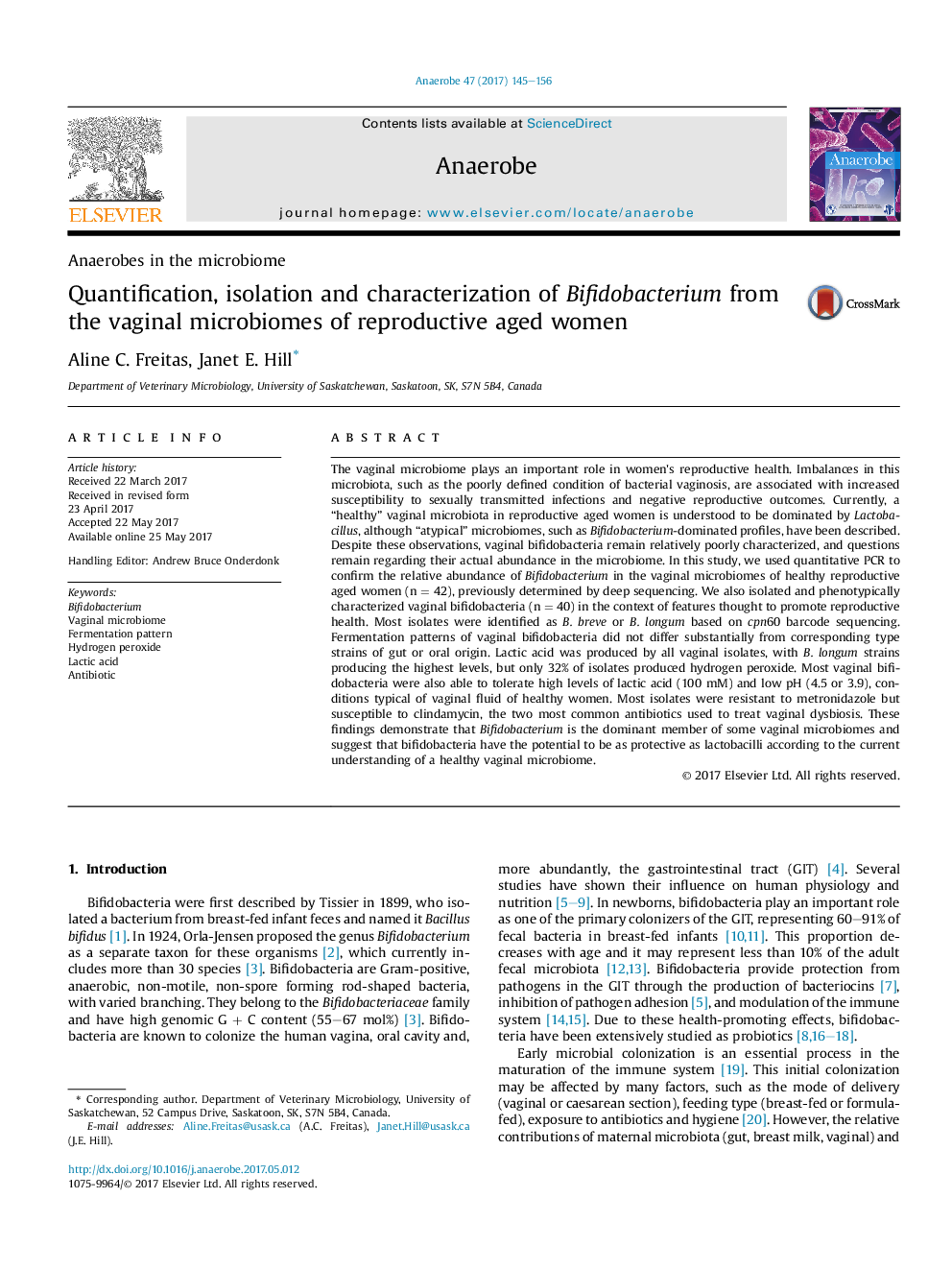| کد مقاله | کد نشریه | سال انتشار | مقاله انگلیسی | نسخه تمام متن |
|---|---|---|---|---|
| 5671295 | 1592817 | 2017 | 12 صفحه PDF | دانلود رایگان |
- Healthy vaginal microbiomes can be dominated by Bifidobacterium.
- Phenotypic features of bifidobacteria related to reproductive health were analyzed.
- Fermentation patterns of vaginal bifidobacteria were similar to those from the gut.
- Vaginal bifidobacteria produced and tolerated lactic acid and low pH.
The vaginal microbiome plays an important role in women's reproductive health. Imbalances in this microbiota, such as the poorly defined condition of bacterial vaginosis, are associated with increased susceptibility to sexually transmitted infections and negative reproductive outcomes. Currently, a “healthy” vaginal microbiota in reproductive aged women is understood to be dominated by Lactobacillus, although “atypical” microbiomes, such as Bifidobacterium-dominated profiles, have been described. Despite these observations, vaginal bifidobacteria remain relatively poorly characterized, and questions remain regarding their actual abundance in the microbiome. In this study, we used quantitative PCR to confirm the relative abundance of Bifidobacterium in the vaginal microbiomes of healthy reproductive aged women (n = 42), previously determined by deep sequencing. We also isolated and phenotypically characterized vaginal bifidobacteria (n = 40) in the context of features thought to promote reproductive health. Most isolates were identified as B. breve or B. longum based on cpn60 barcode sequencing. Fermentation patterns of vaginal bifidobacteria did not differ substantially from corresponding type strains of gut or oral origin. Lactic acid was produced by all vaginal isolates, with B. longum strains producing the highest levels, but only 32% of isolates produced hydrogen peroxide. Most vaginal bifidobacteria were also able to tolerate high levels of lactic acid (100 mM) and low pH (4.5 or 3.9), conditions typical of vaginal fluid of healthy women. Most isolates were resistant to metronidazole but susceptible to clindamycin, the two most common antibiotics used to treat vaginal dysbiosis. These findings demonstrate that Bifidobacterium is the dominant member of some vaginal microbiomes and suggest that bifidobacteria have the potential to be as protective as lactobacilli according to the current understanding of a healthy vaginal microbiome.
Journal: Anaerobe - Volume 47, October 2017, Pages 145-156
